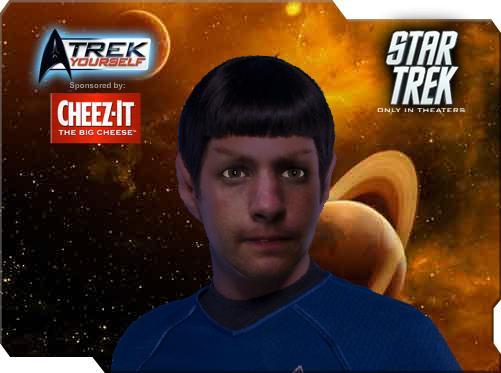In the trailer bin of late: Rachel McAdams gets another notebook, wherein she keeps up with the comings and goings of future husband Eric Bana, in the new preview for Robert Schwentke’s The Time-Traveler’s Wife. (I haven’t read the book, but was hoping this movie would seem more sci-fi and less rom-com.) Robin Williams finds the Dead Poets Society life considerably less appealing after two decades in the red band trailer for Bobcat Goldthwait’s World’s Greatest Dad. (Definitely maybe.) And Jesse Eisenberg and Woody Harrelson take more than a few pages from Shaun of the Dead in the new trailer for Ruben Fleischer’s Zombieland. It’s looking missable.
Category: Fanboy
Down, Up, and Over.
Since I’m behind on my movie reviews, as ever, I’m hitting up the past few summer flicks I’ve witnessed in bulk. So, in brief:
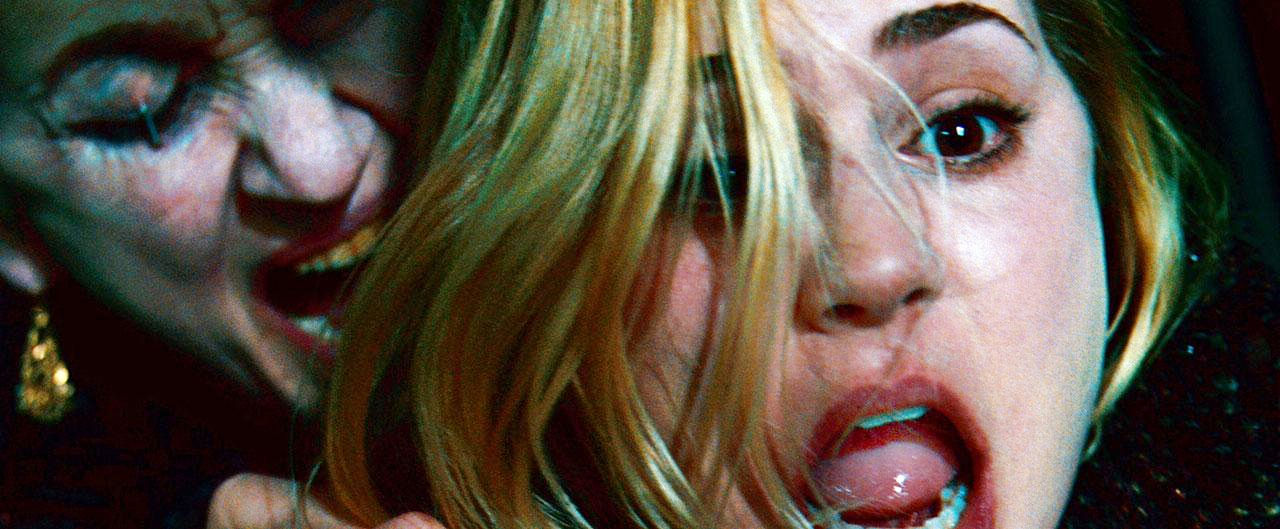
If you haven’t seen the previews, Christine Brown (Alison Lohman, quite appealing) is an ex-farm-girl trying to shake off her country roots and jump ahead a few social strata in the City of Angels, and she’s doing everything she can to be (or at least seem) upwardly mobile — she’s listening to pronunciation tapes to lose her accent, she’s foregoing sweets to keep her (newly thin) figure, she’s eyeing a promotion to assistant manager at the bank she works at, she has wildly overpaid for a trendy Mac laptop, etc. Then again, the last decision was probably forced on her, as Christine is currently dating Mac Guy (Justin Long), here Clay, a new psychology professor whose wealthy, elitist parents radiate condescension towards poor Christine. (By the way, fellow gradual students: if the kid being dragged to Hell before the opening credits didn’t tip you off that this is fantasy, the sight of Long starting a new academic job, complete with spiffy office, should do the trick. Riiiiight.)
At any rate, in her halfhearted attempts to seem ruthless enough for her bank promotion, Christine one day refuses the pleas of a sickly (re: gross) old woman (Lorna Raver) and signs off on the foreclosure of her home. Huge mistake, as this grotesque crone is actually of the gypsy persuasion — Yes, this movie is gonna make massive bank in Kazakhstan. Soon enough, after a comic brawl that involves stapled eyes and a lot of gummings, said gypsy dooms Christine to Hell. Hades. The Bad Place. And so, poor Ms. Brown only has three days — days which she will spend tormented by the lamia, a shadowy goat demon from the nefarious netherrealms — to save her soul. And, if you factor in LA ‘s infernal traffic, that’s really only two days…
One of the running jokes in Drag Me to Hell is that pretty much everybody around Christine — her boss (David Paymer), her co-worker (Reggie Lee), her gypsy nemesis, Clay’s parents, even Clay, whose warmth and sincere fondness for Christine is infused with noblesse oblige — is probably more deserving of her dire straits than she. Raimi’s film is positively Victorian in its punishing of Christine for trying to transgress class boundaries — apparently, there is no sin worse in LA than social striving. Still, pondering Drag Me to Hell‘s socioeconomic implications for any length of time is missing the point. Best to just sit back and let the blood, maggots, and embalming fluid flow. And if the elderly woman a few seats over won’t stop hacking, coughing, or chattering during the film — trust me, you’ll want to just let her do her thing.
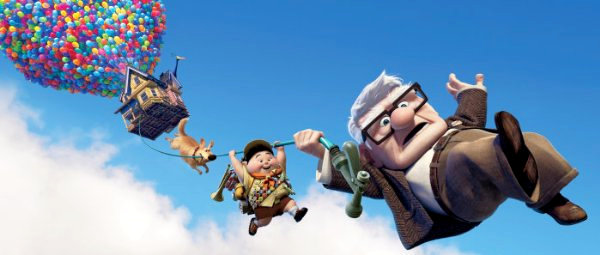
Up begins with a meet-cute between nerdy Carl (eventually, Ed Asner) and adventurous Elie (Elizabeth Docter), two youngsters who share an inordinate fondness for explorer Charles Muntz (Christopher Plummer) and his Spirit of Adventure, the zeppelin he piloted to faraway Paradise Falls, never to return. These two kids enter a pact that they will one day follow in the footsteps of their hero…but, after love, puberty, marriage, and a life well-lived, they never quite make it. By ten minutes in, Elie has passed on, Carl is now an old and curmudgeonly retiree, and their longtime house is about to be torn down by ne’er-do-well corporate developers. Knowing no gypsies, Carl takes drastic action of a different kind — he attaches several hundred helium balloons to the premises and simply floats away. And, with an inadvertent stowaway in tow — That would be Russell (Jordan Nagai), the would-be Wilderness Scout who just wants to “assist the elderly” and procure his final badge — Carl finally has that long-awaited Paradise Falls adventure, which includes but is not limited to an ill-fated reunion with Muntz, a giant bird named Kevin, and a gaggle of roaming, Bowlingual-enhanced dogs…Squirrel!
Much hilarity and occasional melancholy ensues, of course, as per the norm. But for all the film’s many strengths, I thought Up suffered from a grievous structural flaw that knocks it out of the top tier of Pixar offerings. Remember how the first forty minutes of WALL-E just overpowered the broader and more whimsical “starship fatties” half of the movie? Well, Up feels even more frontloaded. The first ten minutes or so of the film, encompassing Carl and Elie’s many decades together, is so concise and elegantly told that it just put me out of the mood for the colorful birds and talking dog hijinx that follows. Ever see the ST:TNG episode where, due to that particular week’s encounter with a cosmic energy force, Picard ends up living out an entire lifetime — marriage, kids, grandkids, and all — while only forty-five minutes passes on the Enterprise? How was he supposed to go back to the usual random shuttling back-and-forth across the Alpha Quadrant after an experience like that? Well, Up felt for me much the same. It basically peaks in the first ten minutes, as it tells the story of a lifetime, and everything thereafter — tho’ kids will probably feel different — is just a slow leaking of air.
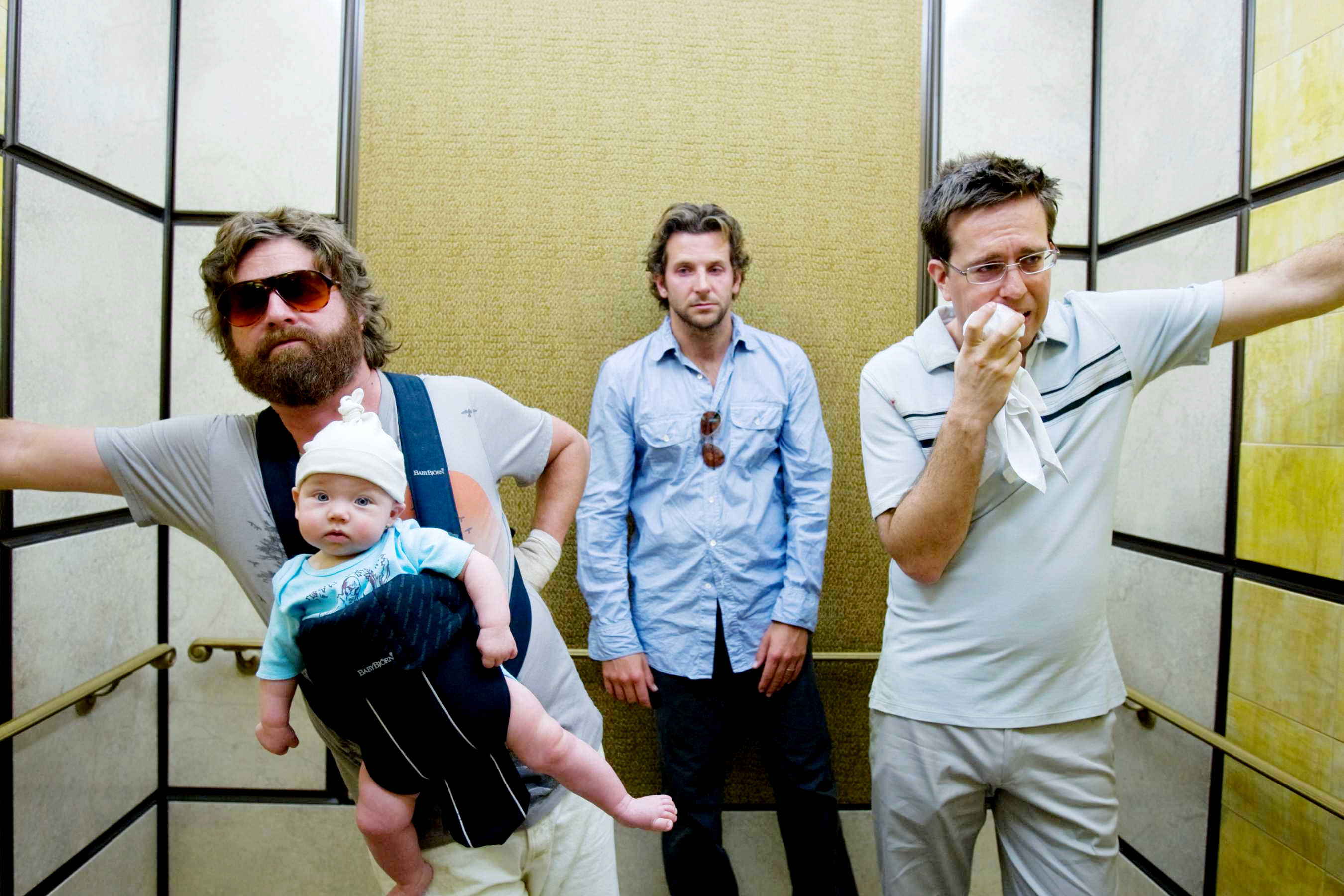
The premise of The Hangover may be the funniest thing about it. Four friends — ok, three friends and Alan, a weird deadbeat soon-to-be brother-in-law (Zack Galifianakis) — descend upon Vegas to paint the town red for a blowout bachelor party. Cut to the next day, and things have clearly gotten out of hand. Doug the groom (Justin Bartha) is nowhere to be found. Phil the lothario schoolteacher (Bradley Cooper) has a monster headache and a hospital band around his wrist. Stu the henpecked, cuckolded dentist (Ed Helms) has lost a tooth and gained a wife. And Alan can’t find his pants or his man-satchel…but has found a tiger in the bathroom and a toddler in the closet. So what the eff happened? The remaining three musketeers try to piece together clues of their Big Night and find their lost friend before zero hour in California, when Bridezilla awakens. Can they save the day in time?
The Hangover works best if you think that absolutely anything could’ve happened the night before. As it turns out, tho, most of what happened is constrained by what you’ve seen in the previews (or, barring that, the promotional materials all over the theater I was in — Heather Graham, check. Mike Tyson, check. Mike Epps, check.) And so what you’re mostly left with is a few hours of waiting for these haggard guys to tick off the next few boxes and get up to speed with the trailer. In the meantime, their company is, well, mildly entertaining, I guess, although (as in Old School) these dudes — and the sense of humor — are all a bit too mook for my taste. (If you find bare asses funny on their own terms, tho’, have at it.) A lot of the jokes revolves around Zack Galifianakis’s Alan, who’s…not quite right in the head. But, frankly, he just seems like a collection of comedy writing tics than a full-fledged character like, say, Walter Sobchak in Lebowski. What can I say? Humor is a delicate thing, and it differs for different people. But, aside from a line here or there (like the “Holocaust ring” one in the trailer), I just didn’t find The Hangover all that funny. Your mileage may vary.
Besides, on my first wild weekend in Vegas, Dubya started an unnecessary, multibillion-dollar war. Beat that for crazy.
Terminator X’ed.
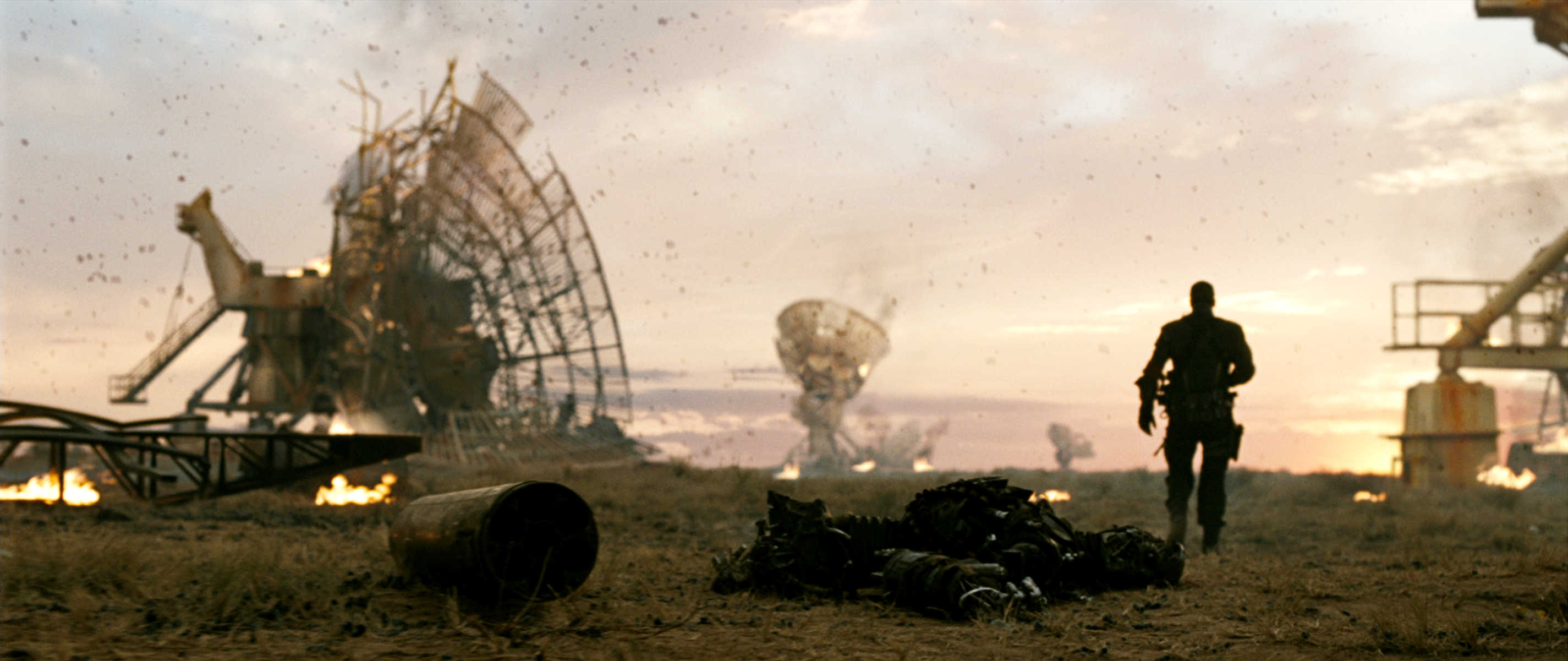
The year is 2018 — yes, only nine years from now — and, as foreordained since the very first Terminator back in 1984, John Connor (Christian Bale) and the scattered remnants of Humankind are battling for survival against the mechanized minions of Skynet. (And, with an air force and nuclear subs at their disposal, the humans are actually doing quite a bit better than we all ever expected.) But, wait…first, it’s 2003, and death row inmate Marcus Wright (Sam Worthington, soon of Cameron’s Avatar) is being given the hard sell by a cancer-ridden doctor (Helena Bonham Carter) to donate his body to science…namely, good old Cyberdyne Systems. (And with Worthington forced to deliver groaners like “Now I know what death tastes like” after a farewell kiss, Dead Man Walking this isn’t.)
Anyway, Marcus signs the dotted line, which undercuts a good bit of the drama when he awakens fifteen years later, after Judgment Day, and has no idea what’s going on. (Ok, all the trailers had already blown that particular spoiler wide open anyway.) In any event, Marcus soon falls in with a resourceful teenager, Kyle Reese (Anton Yelchin), and his — I kid you not — mute child companion (Jadagrace). As this unlikely trio venture through Southern California avoiding androids — they mostly come out at night, mostly — John Connor and his crack military team attempt to find his future father, figure out why Skynet is now taking so many human prisoners, and deploy a possible game-changing sonar device that seems to work as a universal Off switch. Will it work, and cripple Skynet for good? Well, considering we still have eleven more years before the (future) events of the first film, it’s safe to say there’s probably gonna be a few snags…
Even if you’re not all that cognizant of the Terminator backstory, it won’t take long to realize that the story we were expecting to see — John Connor sends his father, Kyle Reese, on a doomed mission into the past — is not being told here. In that sense, Terminator: Salvation plays a lot like another unnecessary-feeling sci-fi prequel to the prequel, The Phantom Menace. (That goes double once you start thinking of Marcus, Connor, and Reese as the Qui-Gon, Obi-Wan, and Anakin of this outfit respectively.) And, like Menace, the stakes here feel surprisingly low, mainly because we know a lot of these characters have a future (or, in Reese’s case, past) date with destiny, and that it isn’t being covered here mainly so that the powers-that-be can make some extra coin at some point in the future.
The problem is, after a movie this poorly written, who’s going to bother showing up? I know it’s useless to continue railing about the same sad old thing, but, really — how does a script this shoddily written ever get off the ground? Isn’t there any sort of quality control that goes into making a $100 million+ flick? I already mentioned one of the many horrible lines scattered throughout this movie, but that’s just that the tip of the iceberg. Every character in this movie is a one-note affair, from the Big Three down to folks like Bryce Dallas Howard (the supportive hug-giver), Common (the GI with a dead brother), and Michael Ironside (the skeptical higher-up). The leaps of logic required throughout this film make time travel seem eminently plausible. (Why isn’t Skynet’s “asset” activated sooner? How did Bale get on that sub? How are the robots missing that not-so-secret army base? Does that gimongous Transformer people-grabber thing have a stealth mode or something?) At one point, to get it across that Marcus is a stand-up guy, we actually have an interlude involving a gang of rapists out of Deliverance — I mean, how lazy can you get? And the climax — in which all the main characters run around Skynet HQ without much purpose — just makes no sense at all. (Nor does the ending, or, for that matter, the original ultra-dark ending, which for all its bravura would’ve screwed up the timeline something fierce.) And I did mention the mute kid, right? Hoo boy.
So, what’s good? Well, despite the pitiful writing, the three main characters are all pretty watchable, even if Bale spends the entire movie in raspy monotone mode. (I like Bale as an actor quite a bit, but those folks who say he’s “slumming” it by making this movie clearly never sat through Reign of Fire or Equilibrium. The man, power to him, has never been above slapdash genre outings.) Sam Worthington isn’t given much to do but act pained and stoic, but he has presence, and I could see him being a A-lister if given the right material. And Anton Yelchin’s star continues to rise after Star Trek — he’s easily the most appealing figure in the movie, and comes across as a more feral and dangerous version of Elijah Wood. (Dare I say, he’s Bilboesque? Well, maybe.) Finally, there’s a surprise cameo of sorts in the latter third that’s good for a solid fifteen seconds of real movie thrills, before it too degenerates into badly-thought-out nonsense. But in the grim post-Judgement Day future, I guess you take your movie moments where you can find them.
Also, the lighting? So not professional.
A Snowy Christmas.
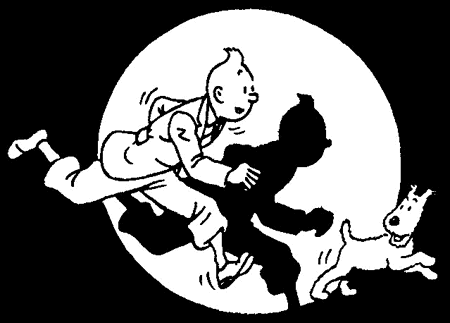
Nine Walkers…Again.
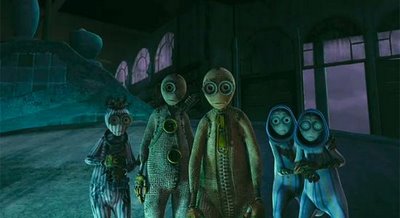
Ancients of Asgard.
Casting fills out for Kenneth Branagh’s Thor — there’s a phrase that should stay weird for awhile — with the titular hero to be played by Chris Hemsworth (recently George “Papa” Kirk in Star Trek) and Branagh veteran Tom Hiddleston as Loki. Well, they both look the part, at least. So far, so good.
Life, Jim, But Not As We Know It.
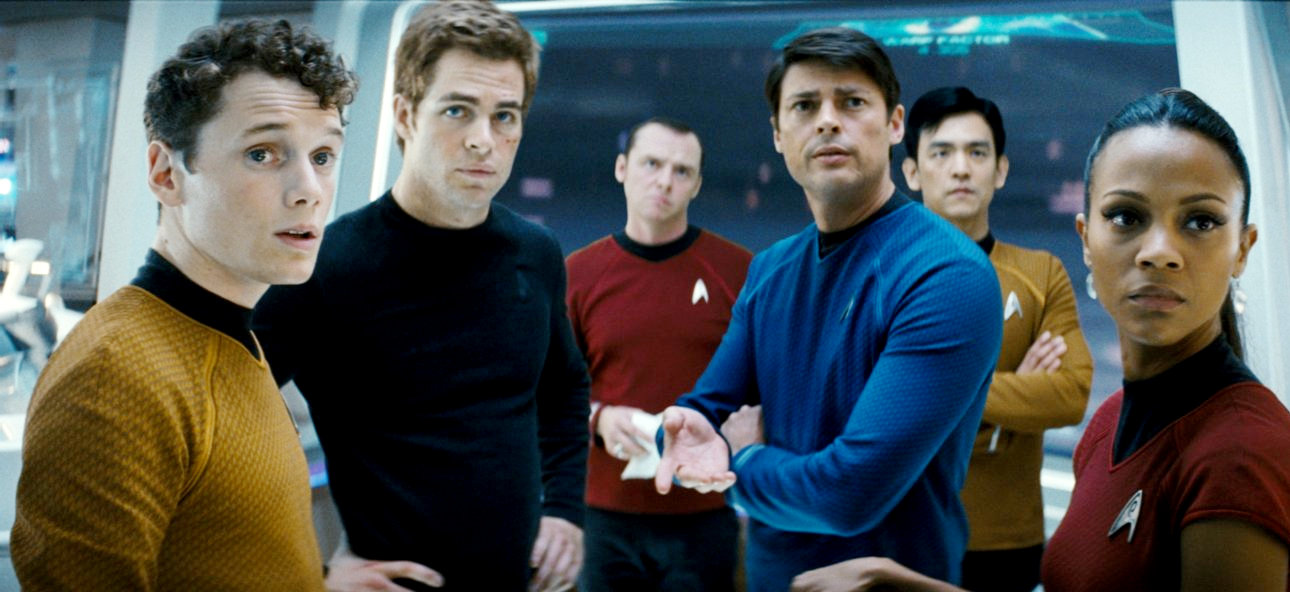
But on the nineteenth hour of the seventh day of the fifth month of 2009, (or, if you’d prefer, Stardate 62851.9), the war at long last ended. For, with the release of the eleventh film in the latter franchise, J.J. Abrams’ Star Trek, these once-feuding universes converged. Blessed with a charismatic and appealing cast that smooths over much of the choppy writing turbulence therein, Abrams’ Trek reboot isn’t only a rousing, over-the-top, sometimes patently absurd space opera that borrows as much from Lucas’ original trilogy as it does from its erstwhile source material — It’s also probably the best of the Star Wars prequels. The more I’ve thought about it over the past few days, the less sense the movie makes, and the more and more shamelessly derivative Trek seems. But darned if I didn’t have a good time during the Big Show itself, which, of course, is what really matters in the end.
This iteration of Trek begins with an on-duty starship encountering the usual deeply weird phenomena on the fringes of Federation territory — in this case, a lightning storm in space. And, just like that giveaway red shirt on an unknown Away Team member (see also: Sam Rockwell in Galaxy Quest), the fact that said ship is not emblazoned Enterprise but, rather, the U.S.S. Kelvin signifies that there’s probably some serious trouble ahead. (Also, just as Lts. Chekov and Uhura on the original bridge signifed an optimistic faith in mankind’s ability to move past the Cold War, racial inequality, and other seemingly intractable dilemmas of the Sixties, the fact that the Kelvin is captained by Pakistani-American actor Faran Tahir, most recognizable as the Mandarin-sponsored Afghan terrorist of Iron Man, indicates that the Trekverse laudably remains an hopeful and inclusive one.)
Well, the allegorical obstacles in Trek may come and go, but then as now, aliens with ridges and/or tattoos on their head are usually up to no good. And, sure enough, a disgruntled Romulan named Nero (Eric Bana) soon emerges from said lightning cloud and obliterates the Kelvin…but not before some daring, ultimately suicidal heroics by acting Captain George Kirk. Cut to several years later, when Kirk’s only son, James Tiberius, is acting out his abandonment issues by transgressing authority whenever possible amid the cornfields of Iowa. (Hey, good news, Ad Rock — the Beastie Boys still get some run in the 23rd century.) Meanwhile, over on the planet Vulcan, Spock, a young boy of mixed lineage — Vulcan father, human mother — fends off the taunts of his schoolmates and struggles more than most to keep his emotions in check. (Playing Spock’s parents are Ben Cross, looking quite a bit like the Sarek of old, Mark Lenard, and Winona Ryder, inexplicably cast to wear bad age make-up, respectively.)
Another jump forward, and James T. Kirk (Chris Pine, a real find), still raisin’ less corn and more hell than most around him, is shamed into joining Starfleet after a bar brawl by Capt. Christopher Pike (Bruce Greenwood), who just-so happened to write his dissertation(?) on Kirk the elder’s heroism. (Pike will conveniently forget much of this later on.) Meanwhile, Spock (Matthew Quinto, making the post-Sylar leap) has had it up to his eyebrows with Vulcan nativism and has subsequently enlisted in Starfleet himself, where his duties include, among other things, developing the diabolical Kobayashi Maru. These two men are clearly on a collision course: Kirk’s bold, earthy blend of action and intution — “leap before you look,” basically — is the exact opposite of Spock’s cold embrace of logic and reason. And, when Nero returns to threaten Vulcan, and, subsequently, Earth, will these two potential heroes be able to get past their obvious differences and form a winning team? Unfortunately, Leonard “Bones” McCoy (Karl Urban, doing a pitch-perfect DeForrest Kelley) has been shuffled to the background, and isn’t really around to square that circle like he once did.
There’s more to the story, of course, including a mid-act time-travel twist that, especially by Trek standards, is more elegant than most. (I particularly liked how it preserved all of the classic continuity while allowing for anything to happen in this new, pocket universe.) But the basic gist here is: Let’s get the Band Together! And, as per the “future-nostalgia” habit of so many prequels these days, Trek spends a good bit of its run just getting all of the Enterprise‘s ducks in a row — Scotty in the engine room, Bones in the medbay, Uhura (wo)manning the comm, etc. This could all get pretty tiresome in terms of inside-baseball, I guess — there are shout-outs to everything from Orion slave girls to Scott Bakula’s beagle — if the cast here wasn’t so uniformly game for anything that comes along. Kirk, Bones, Chekov, and Scotty in particular are all written a bit broadly, but the actors really succeed in selling even the goofiest subroutines here. And having the imprimatur of you-know-who of the classic era — playing Obi-Wan Kenobi basically — really lends Abrams’ Star Trek reboot a touch of class that I’m not even sure the Shat could’ve provided.
Now, speaking of Obi-Wan, I guess it’d be a bit churlish, after the depressing lowlights of Insurrection and Nemesis, to begrudge fans of this universe “A New Hope.” Still, even with glimmers of Trek’s previous highs — the surveying-the-Enterprise sequence of The Motion Picture, the humor and ship-to-ship combat of Wrath of Khan — every so often, there’s just an extraordinary amount of ganking from the Original Trilogy going on here. Now, as I said above, I’m one who thinks there’s a lot more in common between Wars and Trek than is often acknowledged. Whether it’s Luke using the Force at the last possible moment, or simply Scotty/Geordi reversing the dual positronic overlays on the tachyon inhibitors surrounding the dilithium field, we’re still in deus-ex-machina territory nine times out of ten. (And imho, Trek, despite its reputation, was never really close to being hard-sci-fi anyway.) That being said, the sweeping, larky space opera tone of Star Wars has been almost completely appropriated here by Abrams and his writing team, to the point where it almost seems actionable. (Although, now that I think about it, the SW prequels, with their flat, wooden scenes of actors discoursing interminably about the taxation of trade routes and/or New Agey questions of morality, was actually pretty close to bad Trek.)
And it’s not just the tone. Despite having some very Skywalker-ish Daddy issues, and sharing his very own “Twin Suns” moment of destiny with a constitution-class starship in Iowa drydock, James T. Kirk here is, for all intent and purposes, a swaggering, swashbuckling “scoundrel” in the mode of Han Solo. There’s a Mos Eisley-ish cantina sequence where, particularly by Trek standards, Star Wars-style aliens abound. The pre-sibling reveal, Luke-Han-Leia love triangle of ANH is grafted note-for-note onto Spock-Kirk-Uhura. There’s an ice moon strongly reminiscent of Hoth, with a Wampa-like creature and (in one of the weakest moments of the film) a Naboo-like “always a bigger fish” food chain. (On this one i’ll concede, it’s also a lot like Rura Penthe, the “aliens’ graveyard” of Star Trek VI.) They even go so far as to give Scotty an ugnaught (although, it does look a bit like Twiki, and given a later Augustus Gloop-like incident involving Montgomery Scott and a water-pipe, it could also be an Oompa-Loompa.) If imitation is the sincerest form of flattery, then it’s clear: new Trek and old-school Star Wars are very much on the same page.
Unfortunately, that page as presented here still needs one more rewrite. Thanks to the sterling cast and some spiffy camerawork (the ubiquitous lens flares do get to be a bit much, tho), I happily went along for the ride for most of Trek. But even during the funhouse itself, some glaring errors in logic become harder and harder to ignore. Now, I’m not talking about continuity lapses with what’s come before — I think the reboot here makes sense on its own terms, and that’s not my bag when it comes to Trek anyway. Nor am I really talking about science problems, even though they’re considerably worse here than usual for Trek. (Much violence is done to our understanding of black holes in this film — Schwarzchild does not exist in this dojo. Then again, it’s probably too much to ask that Trek get gravity wells right when, judging by the completely absurd freefalling-onto-the-space-drill sequence, regular ole gravity is hard enough. But, hey, once you accept warp speed, I guess all bets are off anyway.)
No, the real problems arise with basic storytelling lapses that, if you’re wired that way (and I suspect most sci-fi fans are), will nag at you even during this otherwise transporting film. [Some spoilers to follow.] Like, where was Nero over the past twenty-five years, and why didn’t he use any of that time to rethink his somewhat dubious motives for vengeance? (Wiping out the Federation wouldn’t prevent in any way his planet’s demise, which, as explained, was caused by Romulus’ star going supernova.) Even given the sudden emergency at hand, why are there absolutely no ranking officers of any consequence — Pike excepted — on board the Federation’s newly-built flagship, the USS Enterprise? If it’s a serious enough matter to send raw cadets from the Academy, wouldn’t some of Starfleet’s old hands in and around San Francisco also answer the call?
Also, if “Red Matter” — don’t ask — is as unbelievably, mind-blowingly powerful as it’s portrayed here, why did the Vulcan Science Academy even bother to create — and then send off! — a heaping Big Gulp-size quantity of it? Talk about your WMD. For that matter, particularly given what happens with this stuff late in the film, why was Nero even bothering with the big Space Drill part of his plan anyway? Seems a bit purposeless, doesn’t it? And, even allowing for the mystical, Force-like workings of Fate (as well as his dubious dispatch from the Enterprise itself), Cadet Kirk running into you-know-who in a random cave in the middle of nowhere at exactly the best possible moment was show-stoppingly ludicrous. It’s the type of thing you’d expect from poorly-thought-out fanfic, not a $100 million movie.
Now I don’t mean to get too lost in the nitpicks. I really enjoyed myself during Star Trek, and, despite its storywriting faults, it’s almost assuredly the best film in the franchise since Khan (or The Voyage Home, I guess, if you’re more into the funny-Trek. I also quite enjoyed First Contact at the time, and I always thought Undiscovered Country was underappreciated.) Check your brain at the door, and Trek is about as good a reboot as we all could’ve hoped for, and a fun, sexy, summery throwback to the space operas of yore. Hey, it’s almost definitely the best Tyler Perry film ever made, and, now that the 2.0 Trekverse is up and running, you can definitely count me in for another installment with this here crew. Particularly if — from Hell’s heart, he stabs at thee! — they actually land Javier Bardem as the Big Bad for ST XII: Khan Strikes Back. Just don’t give him a Star Destroyer, and please keep Kirk away from the carbonite.
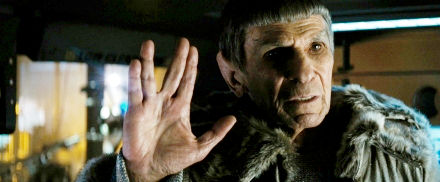
Toys in the Attic.
In the wake of Wolverine comes a handful of explosion-heavy trailers for your pre-summery consumption: First up, Shia LeBoeuf and Megan Fox, as well as Tyrese, Turturro, et al, run with the robots again in the full trailer for Michael Bay’s Transformers: Revenge of the Fallen. Given how boring I found the first one, I’m pretty sure I’ll take a pass. But, hey, if “Bayformers” is your particular cup of awesome, have at it.
If your attic harbors a different set of deteriorating toys, however, Dennis Quaid is assembling a top-notch team — Channing Tatum, Marlon Wayans, Joseph Gordon-Levitt, Rachel Nichols, Ray Park — to avenge the Eiffel Tower in the new trailer for Stephen Sommers’ GI Joe: The Rise of Cobra. (That’s Sommers of the woeful Van Helsing, by the way. Also, is it just me, or aren’t bad summer movies completely abusing the after-the-colon-subtitle this year? It reminds me of my teaching days.)
Anyway, imo this looks really terrible, and I barely know who any of these characters are — the ninja-fellow was called Snake Eyes, right? So the only point of interest I’m finding here, with the possible exception of the Ninth Doctor paying the bills, is Sienna Miller as the Baroness. Thing is, I already fell for that British-vixen-in-a-leather-catsuit trick once with Underworld, which was also terribad. So in the parlance of the ex-decider, “Fool me once, shame on you. Ya fool me, you can’t get fooled again.“
Finally — and this one might actually be decent — South Africans complain about the new refugee camp in their midst in the teaser for Neil Blomkamp’s District 9. This has been done before with James Caan and Mandy Patinkin in Alien Nation, but I like the verite style, and it’ll be interesting to see where Blogkamp (and producer Peter Jackson) go with it. Count me in.
The Power of Snikt.
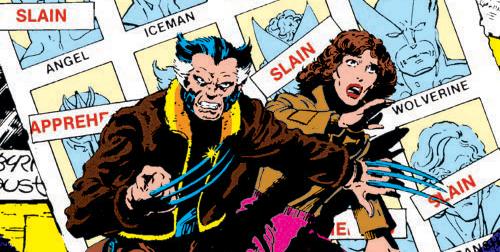
Over in Slate and in honor of his new solo movie (which I’m still planning to skip — I’m sure it’ll be mildly entertaining on TNT in a few years), Grady Hendrix doffs his hat to the enduring popularity of Wolverine. If you say so, bub. When I wasn’t crushing on Kitty Pryde — I was always more of a Nightcrawler kid, so i’ll take your word for it. At any rate, Hendrix’s evisceration of the trademark Claremont style is pretty funny (although I’d disagree with him that Wolvie is Claremont’s Malcolm X — That would be Magneto.)
Adventures on the Holodeck.
